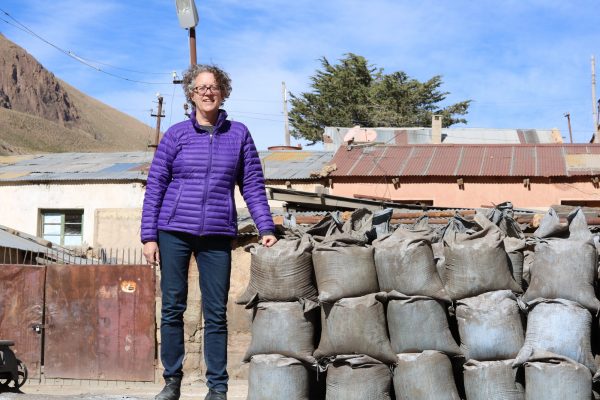Bonanza! CSU anthropologist wins NEH support for Bolivian mining research
Joshua Zaffos
In the southern highlands of Bolivia, the city of Potosí once earned the title of the “treasury of the world, king of all mountains, and envy of kings.” Situated beneath the towering mountain of Cerro Rico and one of the world’s largest silver deposits, Potosí and its riches financed the expansion of the Spanish empire beginning in the mid 16th century. Over time, Potosí grew into a city of more than 160,000 people, with near-mythical status as a place of virtually unparalleled wealth – reaped through the forced labor of tens of thousands of indigenous workers.
Spanish colonial mining companies manipulated a traditional Inca system of mandatory public service to force native laborers into the toughest and most dangerous jobs. That arrangement produced a fortune for imperial Spain even as it exploited indigenous people and took advantage of local mining technologies and practices. Long after the decline of the Spanish empire, silver and tin mining continues in Bolivia today, including small-scale, independent mining – known among people of the Andes as kajcheo.

Mary Van Buren, Colorado State University anthropology professor, first arrived in Potosí and the nearby mining center of Porco in 1995. On one of her trips, she observed a retired miner using wind furnaces, a historical technology for smelting silver. In that moment, she recognized the lasting influence of small-scale, indigenous cultural and industrial practices. Since then, Van Buren has logged years of research in the region studying kajcheo and the indigenous impacts and costs of silver and tin mining in Potosí from centuries ago to the present.
Van Buren’s work received a boost this winter through a $30,000 fellowship award from the National Endowment for the Humanities. The support will enable Van Buren to complete a book highlighting and examining the indigenous roles and toils of colonial and postcolonial mining.
“The fellowship is a great validation of my work and research for 25 years,” said Van Buren whose multidisciplinary research has drawn on anthropology, history, archaeology, politics, and ethnography.
While the conquistadors have long disappeared from Bolivia and the former Spanish empire, kajcheo endures. The small-scale, or artisanal, independent operations have allowed communities to maintain cultural identity tying back to the Inca and pursue economic opportunities, said Van Buren, who led the Porco-Potosí Archaeological Project from 1997 to 2006. And while the Potosí region has suffered its share of conflict, mining cooperatives that are now recognized by the government have generally avoided more violent labor clashes that define mining industries in places such as Brazil and Ghana.
Van Buren’s fellowship was one of just 99 winning proposals among more than 1,200 applications received by the National Endowment for the Humanities.
She plans to complete her manuscript this coming year and hopes her years of research will serve as a bridge between past and present, scholars and local communities of Potosí.
Her book, which will be written in English and translated into Spanish, marks an effort “to take esoteric research on past mining,” Van Buren said, “and make it relevant for the people who are still engaged in and affected by these activities.”